Duck Feet?
How'd
that happen? And what to do about it...
To get an idea of where I'm coming from, you can check
out a different 'article:' 08/08/14
My Opinions on Farriery and Where They Came From
A Small Disaster in the Making
One day you look at your horse's feet and you go 'O GOOD
GOD THE TOE IS TOO LONG!' So you, or your farrier,
pull out the rasp and put a lovely mustang roll on the
foot. And about three months later you see this:
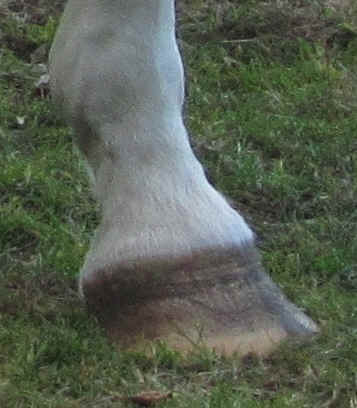
You see lovely new grown that's more telling of the real
shape of the foot and then underneath it you see what looks
like a flare. Whereas before the hoof wall was even
and looked good (but wasn't), NOW it looks messed up. (but
isn't!) What you're seeing is where the toe had been too long and the
hoof wall was being pulled forward. If you're able to
keep up with the good trimming, it's no longer getting
pulled forward so bad and no longer getting misshapen so
bad, but you're for sure able to see how bad it was.
So it looks like this is the problem, but it's actually
the solution working it's way through the foot.
The next problem, the 'disaster in the making' is when
the last bit of the old growth gets next to the ground.
Provided you're keeping the foot trimmed nicely, and keeping
the flare off the ground so the new growth stays tight and
isn't getting deformed too much by the toe pulling it outward, when
that last little bit of old growth gets to the bottom, it's
going to be pointing more outward that downward. The
result is that it seems like it takes forever for the new
growth to get long enough to trim, but it will.
The dynamic in all of this is that how the hoof wall
connects with the ground creates forces that 'inform' the
new hoof how it is to grown. In this case, the long
hoof is pulling the hoof wall away from the desired growth
pattern. One article I read described this as
something similar to catching you fingernail on the side of
a table -- you hand moves, but your fingernail doesn't, and
it hurts like the dickens. (And this is what's
happening to the horse every step.)
|
In this column: The
hoof you'll probably see that requires several cycles
of growth. |
In this column: the 'ideal'
scenario that fixes in one cycle of growth. |
| Before you notice there's a problem -
the toe (or whichever or maybe all of the hoof that's
involved) is getting pulled out of shape by the
contact with the ground. These are the same
pictures ... the one on the right os rotated and
shows how when the end of the toe hits the ground
(lower yellow dot) the force is transferred up the
hoof wall (upper yellow dot) and 'informs' the new
growth. |
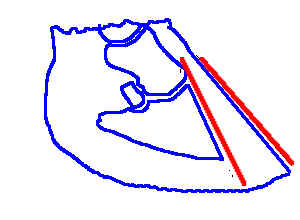 |
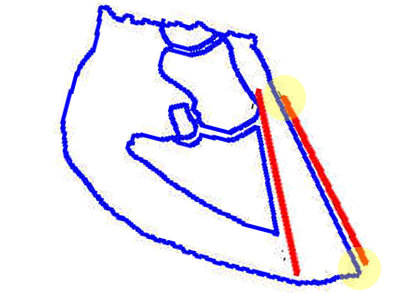 |
| The start of new growth after the
'flare' is gotten off the ground and the new growth is
no longer being adversely acting upon by pulling of
the long areas. |
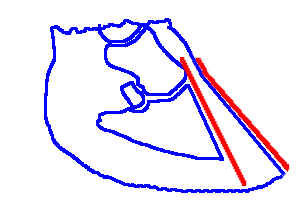 |
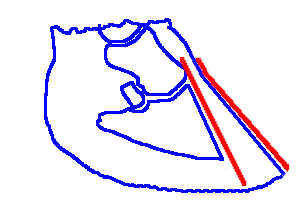 |
| Continued new growth |
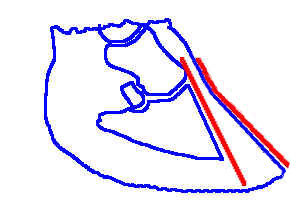 |
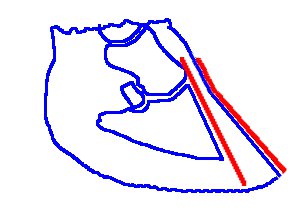 |
| Looks awful but it's better. |
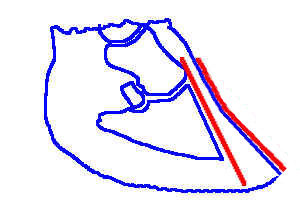 |
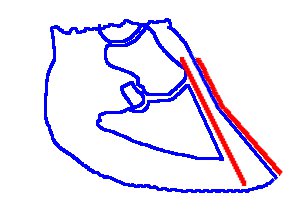 |
| The end is near! |
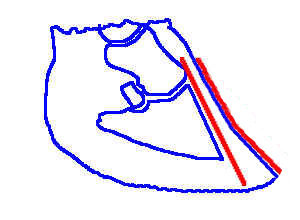 |
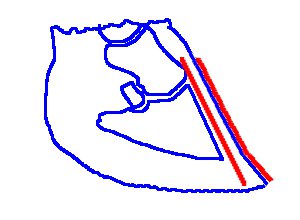 |
| Still getting there... |
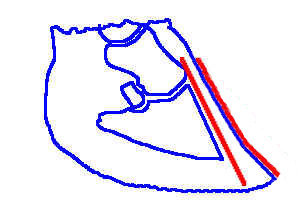 |
|
| The 'disaster' that awaits. At
this point the bottom of the hoof is not in contact
with the ground well at all and it looks like the hoof
is growing sideways instead of downward. The
thing is, this is the final stretch. What looks
awful now was actually awful a year of so ago and has
simply taken this long to grow out. In a little
bit, all of the old malformed hoof will be able to be
trimmed off. |
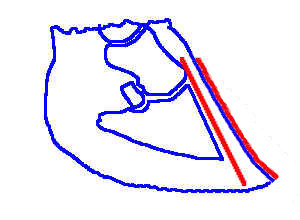
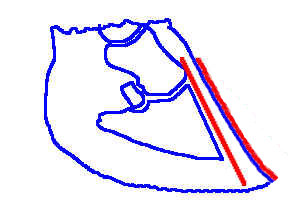 |
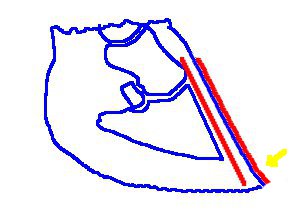 |
| Made it! |
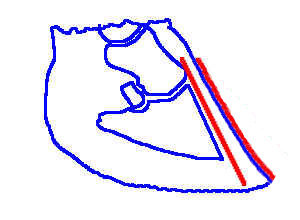 |
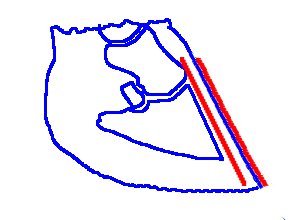 |
|
this hoof will continue to get
better through several cycles of growth.. |
this one is the 'ideal' scenario. |
Disclaimer
So Okay - these are drawings (which are a lot harder to do
on the computer than by hand but my scanner is kaput) and this is somewhat
theoretical, although it also reflects what I've been through
with my horses.
One of my horses came to me with seriously messed up feet
and, to be honest, I didn't take pictures because I never
thought they'd ever get better. While they never got to
be picture perfect, they improved remarkably.
The real trick is to mitigate the damage of the hoof that
is hitting the ground too far away (because it is leveraging
back up the hoof wall and deforming the hoof at the coronet
band.)
(And I am quite certain that the original farrier involved had no
intention of muffing up.)
The Moral of the Story
Be good with the trims! Keep with it, though several
cycles perhaps, and it will get better. And if you
see a horse hoof like this, know that someone 'woke up' and it
now fixing the problem. Kudos to them.
|




![Centered Riding Today: An Informal Talk by Sally Swift [VHS]](http://ecx.images-amazon.com/images/I/41Vn6PfhzML._SL125_.jpg)
![Centered Riding with Sally Swift [VHS]](http://ecx.images-amazon.com/images/I/51OSh9kd9iL._SL125_.jpg)



















